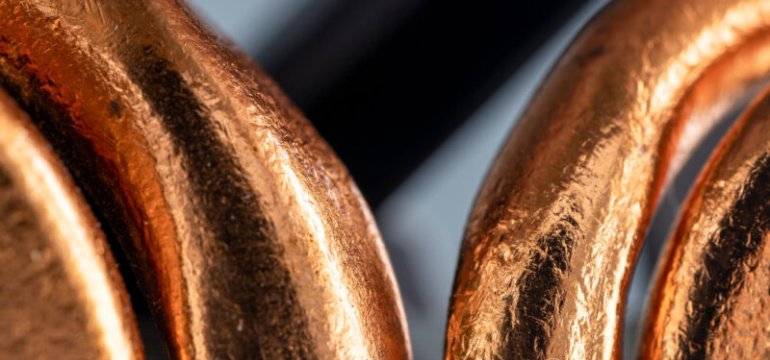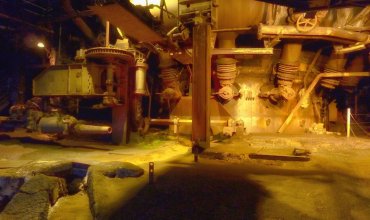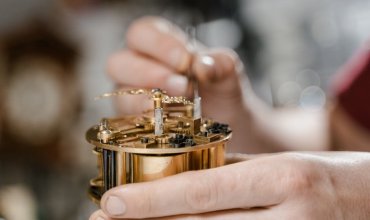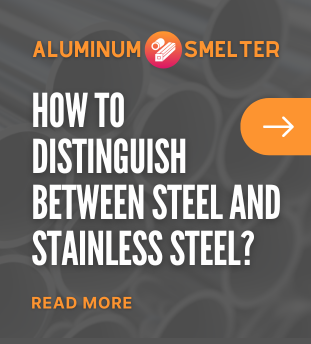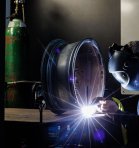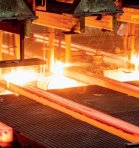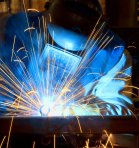Copper is one of the oldest and most widely used metals in the world. Its strength, ease of processing and electrical conductivity make it invaluable in many industries. It is used both by engineers, who work on electrical installations, and by artists, who create beautiful works of art. However, copper has one major weakness - it is subject to oxidation, which can lead to an unsightly appearance and weaken the material's properties. So how to protect this beautiful and useful metal from the harmful effects of oxidation? In this article, we will describe various methods of protecting copper from oxidation, which will work well in both domestic and industrial settings.
Why does copper undergo oxidation?
Copper oxidation process - chemistry in practice
Oxidation of copper, also known as patination, is a chemical process in which the metal reacts with oxygen in the air to form copper oxides. Specifically, it is the reaction of copper with moisture, carbon dioxide and other atmospheric pollutants that leads to the formation of a greenish layer - patina. Patina, while specific and sometimes desirable in some artistic applications, is an undesirable phenomenon in industry and electronics.
Why the variation in the effect of oxidation? The oxidation process depends on a number of factors: temperature, humidity, the type of contaminants present in the atmosphere and the length of time copper is exposed to these factors. Ultimately, patination leads to degradation of the metal's surface, making it weaker and less visually appealing.
Harmful effects of copper oxidation
Oxidation of copper carries both aesthetic and functional issues. Patinated copper loses its original shiny appearance, which can be particularly undesirable for decorative elements. However, the strongest impact of oxidation is on the mechanical and chemical properties of copper. The oxides formed can lead to corrosion, which weakens the metal's structure. In the electronics industry, oxidation can affect electrical conductivity, which is particularly dangerous for copper wires or electrical contacts.
What methods exist for protecting copper from oxidation?
Coating copper with specialized coatings
One of the most effective ways to protect copper from oxidation is to coat it with specialized coatings. Depending on the application, these can be varnishes, paints or even metallic coatings. Varnishes and paints form a thin protective layer on the surface of copper that insulates it from contact with air. For industrial applications, metallic coatings such as nickel, tin or silver are often used, which not only protect copper from oxidation, but also improve its conductive properties.
Electroplating processes
Electroplating is the process of coating metals with other metals through electrochemical deposition. Copper can be coated with thin layers of metals such as nickel or tin, which not only protects it from oxidation, but also increases its strength and corrosion resistance. The process is widely used in the electrical and electronics industries, where conductivity and reliability are key.
Anodic protection
Anodic protection involves using another metal as the anode, which is oxidized instead of copper. This process, also known as cathodic protection, is often used in cases where protective coatings are not possible. An example is the use of zinc or magnesium as the anode, which undergoes oxidation instead of copper, thus protecting it.
Waxing and oiling
Waxing and oiling methods are simple and natural ways to protect copper. Wax or oil forms a thin protective layer on the surface of copper, which insulates the metal from air and moisture. These methods are particularly popular for small decorative or utilitarian items, as they do not significantly affect their appearance.
Use of corrosion inhibitors
Corrosion inhibitors are chemicals that, when added to the environment around copper, slow down the oxidation process. They can be both organic and inorganic compounds. In industry, inhibitors added to cooling systems, lubricants or fuels are often used to effectively protect copper under extreme conditions.
Practical application of methods to protect copper from oxidation
Protection of copper plumbing and heating systems
Copper is commonly used in plumbing and heating systems because of its antibacterial properties and good thermal conductivity. However, oxidation of copper in these installations can lead to corrosion and leaks. To avoid this, interior and exterior coatings, such as epoxy or polymer paints, are used to protect pipes from contact with water and air.
Protecting copper decorative elements
For decorative elements, copper is often used for its beauty and ease of processing. To maintain its aesthetic appearance, various types of varnishes and waxes can be used to protect the surface from oxidation. Regular cleaning and care of decorative elements also helps keep them in excellent condition.
Maintaining the efficiency of copper wiring and electrical contacts
In the electric power and electronics industries, copper is irreplaceable due to its excellent electrical conductivity. Oxidation of copper in wires and connectors can lead to power outages and equipment failure. Regular inspection and the use of appropriate electroplating coatings, as well as conductive lubricants, keep copper wires and connectors in perfect condition.
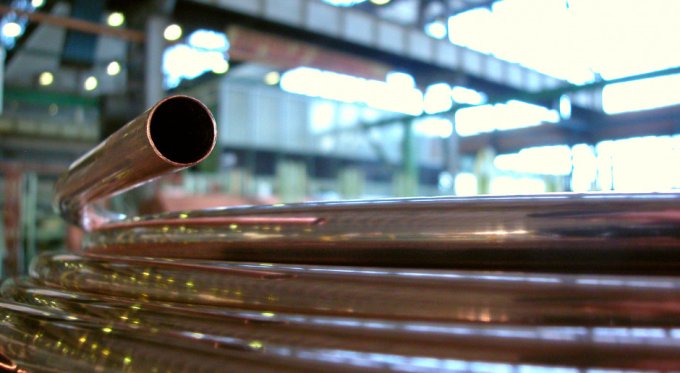
Benefits of properly protecting copper from oxidation
Extended service life and durability
Effective protection of copper against oxidation significantly extends the life and durability of any component in which it is used. With the right protection methods, costly repairs and replacement of damaged components can be avoided, resulting in tangible savings.
Maintaining high electrical and thermal conductivity
By properly protecting copper, we can maintain its excellent conductive properties. This is especially important in the electronics and energy industries, where even the slightest disturbance in conductivity can lead to serious problems.
Maintaining aesthetics
Copper is often chosen for its beauty. Proper protection against oxidation preserves its aesthetics for years to come, which is important in the context of both decorative elements and precision craftsmanship.
The most common questions about protecting copper from oxidation
How often should the protective coating be renewed?
The frequency of renewal of the protective coating depends on the conditions in which the copper is operated. In extreme industrial conditions, more frequent renewal may be necessary, while in domestic conditions regular maintenance every few years is sufficient.
Can protected copper still be processed?
Yes, protected copper can still be processed, but the type of coating used must be taken into account. Some coatings may require special processing conditions so as not to damage the surface.
When protecting copper, does it lose its properties?
No, proper protection of copper against oxidation preserves its physical and chemical properties. Protective coatings are intended only to insulate copper from harmful external factors, without adversely affecting its natural properties.
How to effectively carry out maintenance of copper components?
Maintenance of copper components involves regular cleaning, removal of dirt and application of fresh layers of protective agents. Aggressive chemicals should be avoided and agents dedicated to copper should be used so as not to damage its surface.
What innovations are in the pipeline for protecting copper from oxidation?
Modern protective nanolayers
Modern science is developing innovative technologies for protecting metals, including copper. One of the most promising is the use of protective nanolayers. Nanotechnology makes it possible to create ultra-thin but very strong coatings that effectively protect copper from oxidation. The nanolayers act like a shield, blocking the access of oxygen and other corrosion-promoting agents, while not affecting the metal's electrical and thermal conductivity.
Self-renewing coatings
Scientists are also working on self-renewing coatings that can "repair" their damage from microscopic cracks or scratches. Such coatings are capable of extending the protection time of copper, eliminating the need for frequent maintenance work. Self-renewing coatings could find wide application in both industry and everyday household items.
Smart protective materials
The future of copper protection against oxidation may also lie in so-called smart materials that are able to respond to changing environmental conditions. Such materials could automatically change their properties in response to humidity, temperature or the presence of contaminants, thus providing continuous protection.
Summary
As a versatile and multifunctional metal, copper is vulnerable to oxidation, which can lead to a weakening of its mechanical and aesthetic properties. There are a number of effective methods on how to protect copper from oxidation, ranging from traditional protective coatings, through electroplating processes, to modern innovations such as nano-layers or self-renewing coatings. Choosing the right method depends on the specific application and the conditions to which the copper will be exposed.
With proper protection, the life of copper components can be extended, their high electrical and thermal conductivity can be preserved, and their aesthetic appearance can be maintained. Regular maintenance and the use of modern technology are the keys to success in protecting copper from the harmful effects of oxidation.
We should also remember that the choice of copper protection method should not be random. Experts recommend consulting professionals and conducting tests to select the most effective protection method, according to individual needs and specifics of the application. In this way, copper can serve us for many years, maintaining its irreplaceable properties and aesthetics.


